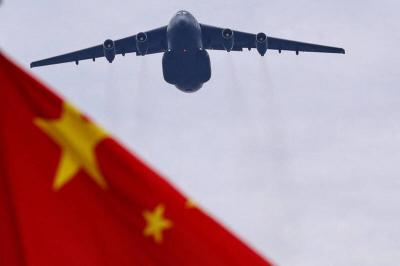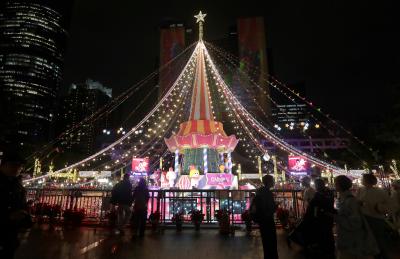Taiwan’s air defense problems might be the most “difficult in the world,” according to a report from the US think tank RAND Corp.
“Taiwan has gone from having a qualitative advantage over the PLA [People’s Liberation Army] in the air, to its current situation, which we assess to be grim indeed,” the 172-page report said.
Titled Air Defense Options for Taiwan and written by Michael Lostumbo, David Frelinger, James Williams and Barry Wilson, the report recommends gutting the fighter plane fleet and spending the savings on surface-to-air missiles (SAM).
Funded by the US Department of Defense, the report could affect future White House decisions on what weapon systems to sell to Taiwan.
“If a major conflict were initiated, China now has the capability to destroy all of Taiwan’s aircraft at their bases, except those that can be hidden in Taiwan’s two mountain shelters,” the report said.
“Taiwan needs to rethink how it can accomplish its air defense goals without heavy reliance on its fight aircraft,” it added.
The report said that Taiwan should use surface-to-air missiles against aircraft and incoming cruise missiles — and improve the survivability of launchers by constantly moving them around.
It said radar is the Achilles’ heel of SAMs, because they need radar to identify, track and attack air threats.
“But an emitting radar is like a bright neon sign and will quickly draw the attention of attack systems,” the report said.
According to the think tank, increasing SAM survivability is a vital component of Taiwan’s future air defense strategies.
In a future conflict, Taiwan would get more from its Patriot and Tien Kung-3 (TK3, “Sky Bow”) SAMs if it preserves them initially by not using them to defend fixed assets, and keeps them concealed until they can be used against landing forces.
RAND estimated that Taipei would spend US$22 billion in the next 20 years on the fighter aircraft currently in its fleet with no changes and another US$3.3 billion to retrofit its F-16 fleet.
“Taiwan is, unfortunately, situated very near a country that continues to make military threats and has invested extensively in a wide range of capabilities that will make it very difficult for Taiwan to fly fighter aircraft in combat,” the report said.
“Although it might be painful for leaders in Taiwan to think of a major divestment of its fighter force, the expectations about the efficacy of that force need to be curtailed,” it added.
RAND recommended that Taiwan spend most of its defense budget not on fighters, but on a SAM force that would keep the airspace above the nation clear to allow other critical military operations.
It said that the SAM force should be increased with a shorter-range system that could provide a more cost-effective layered air defense.
The combination of a short-range interceptor, such as a ground-launched AIM-9X Sidewinder, and a longer-range ground-launched AIM-120 would make a “formidable defense” when used with the existing Patriot/TK-3 defenses.
A force of 21 air defense platoons armed with 1,600 to 2,100 AIM-120 missiles would cost between US$8.1 billion and US$9.2 billion, and would protect large areas of the nation, the report said.
RAND said that, in addition, Taipei could buy five to 12 new batteries of Patriot/TK-3 systems and 300 PAC-3 missiles at a cost of about US$10.6 billion.
The report said that, to afford such missiles, Taiwan would need to give up its F-CK (Indigenous Defense Fighter) and Mirages and reduce its F-16 force.
In an independent analysis of the RAND report, Defense News said that political forces in Taipei and issues regarding pride and morale within the air force made the reduction or elimination of Taiwan’s fighter aircraft fleet unlikely.
Richard Fisher, an Asian military affairs expert at the International Assessment and Strategy Center, told the Taipei Times that RAND’s focus on the air defense challenge alone risks missing a much larger picture.
“The basic threat Taiwan faces into the 2020s is one of actual air-sea invasion, for which destroying Taiwan’s air defenses is but one part of a much more complex campaign,” Fisher said.
He said it was “too early” to write off the fighters.
Fisher said Raytheon had just been selected to develop a Small Advanced Capability Missile (SACM) air-to-air missile (AAM). This could result in Taiwan’s F-16s being able to carry up to 22 medium-range AAMs.
“In that case, one F-16 might threaten nearly a regiment or a whole unit of PLA fighters,” Fisher said. “If the SACM proves successful, you might want to keep your F-16s and not trade them for more SAMs,” he added.
“The basic strategic challenge for Taiwan is to obtain exponential leaps in weapon capability for the minimal increase in defense expenditure. Taiwan will have to spend much more on defense to deter Chinese attack, but it can gain much more capability by retaining or investing in new multi-role weapons that can provide air defense, sea defense and ground attack,” Fisher said.

Beijing could eventually see a full amphibious invasion of Taiwan as the only "prudent" way to bring about unification, the US Department of Defense said in a newly released annual report to Congress. The Pentagon's "Annual Report to Congress: Military and Security Developments Involving the People's Republic of China 2025," was in many ways similar to last year’s report but reorganized the analysis of the options China has to take over Taiwan. Generally, according to the report, Chinese leaders view the People's Liberation Army's (PLA) capabilities for a Taiwan campaign as improving, but they remain uncertain about its readiness to successfully seize

Taiwan is getting a day off on Christmas for the first time in 25 years. The change comes after opposition parties passed a law earlier this year to add or restore five public holidays, including Constitution Day, which falls on today, Dec. 25. The day marks the 1947 adoption of the constitution of the Republic of China, as the government in Taipei is formally known. Back then the Chinese Nationalist Party (KMT) governed China from Nanjing. When the KMT, now an opposition party in Taiwan, passed the legislation on holidays, it said that they would help “commemorate the history of national development.” That

Taiwan has overtaken South Korea this year in per capita income for the first time in 23 years, IMF data showed. Per capita income is a nation’s GDP divided by the total population, used to compare average wealth levels across countries. Taiwan also beat Japan this year on per capita income, after surpassing it for the first time last year, US magazine Newsweek reported yesterday. Across Asia, Taiwan ranked fourth for per capita income at US$37,827 this year due to sustained economic growth, the report said. In the top three spots were Singapore, Macau and Hong Kong, it said. South

Police today said they are stepping up patrols throughout the Taipei MRT system, after a social media user threatened to detonate a bomb at an unspecified station this afternoon. Although they strongly believe the threat to be unsubstantiated, Taipei Metro police and the Railway Police Bureau still said that security and patrols would be heightened through the system. Many copycat messages have been posted since Friday’s stabbing attacks at Taipei Main Station and near Zhongshan MRT Station that left three dead and 11 injured, police said. Last night, a Threads user in a post said they would detonate a bomb on the Taipei